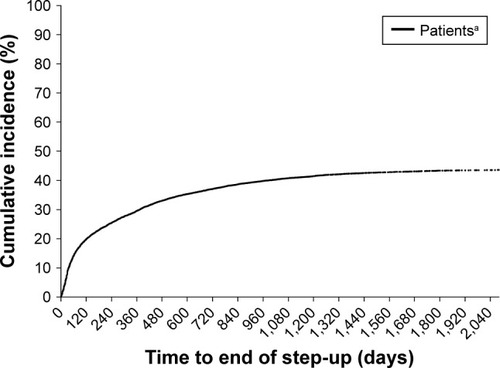Figures & data
Table 1 Patient characteristics at baseline
Figure 1 Cohort selection from THIN database of 8,676,730 patient records.
Abbreviations: FDC, fixed-dose combination; ICS, inhaled corticosteroid; LABA, long-acting β-agonist; LAMA, long-acting muscarinic antagonist; THIN, The UK Health Improvement Network.

Table 2 Comorbidities recorded at any time during the study period
Table 3 Univariate Cox regression analysis with significant (P<0.05) unadjusted predictors of treatment escalation
Table 4 Multivariate analysis outcomes: predictors of treatment escalation
Table 5 Treatment escalation per GOLD 2011/2013 and 2017 classification
Figure 3 MRC breathlessness score in the treatment-escalation group.
Abbreviation: MRC, Medical Research Council.

Table S1 Covariates during the analyzed baseline period

